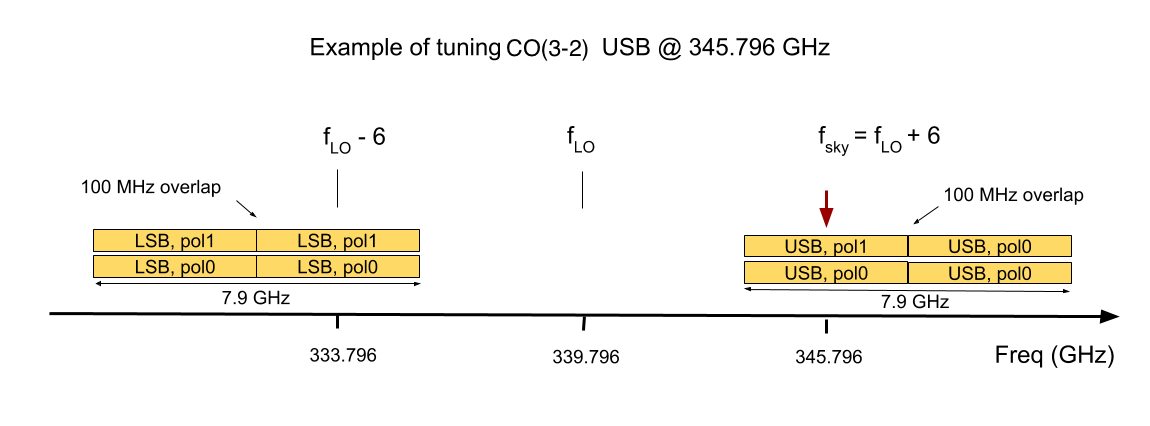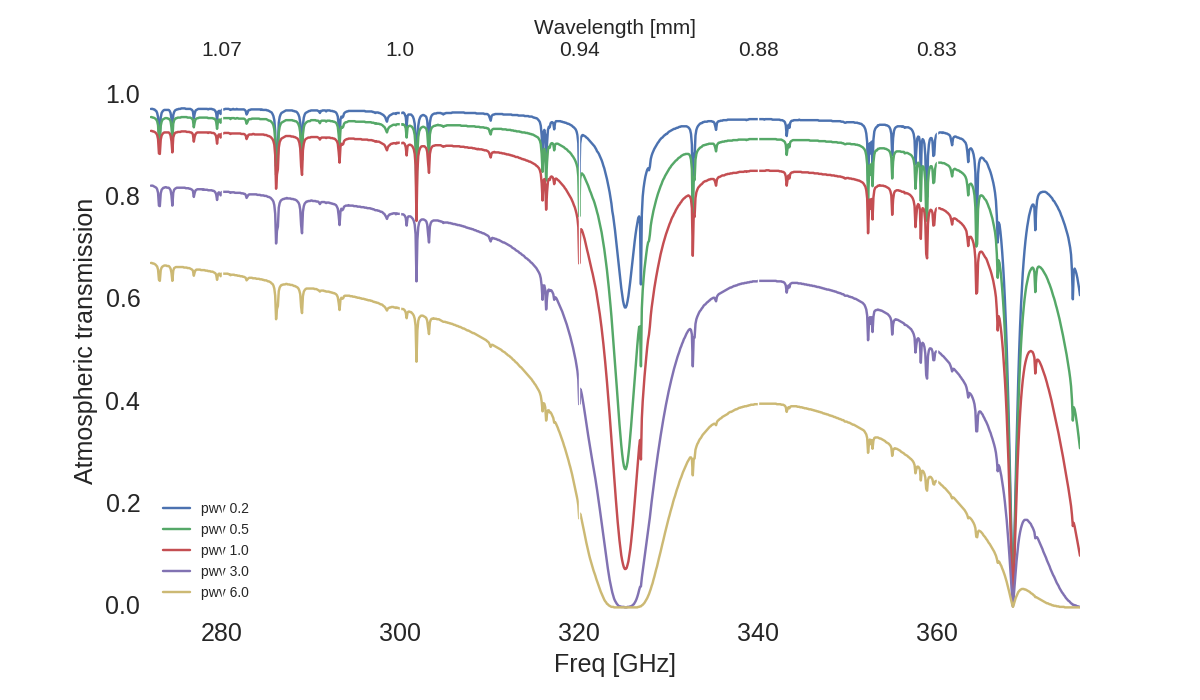Technical details
The SEPIA345 channel is a dual polarisation 2SB receiver delivered to APEX by the GARD group in 2020.
The SEPIA345 receiver has two IF outputs per polarisation, USB and LSB, each covering 4-12 GHz, adding up a total of 32 GHz instantaneous IF bandwidth. The central frequencies of the two sidebands are separated by 16 GHz.

Each sideband (and polarisation) is recorded by two FFTS spectrometer units, each of them sampling 4 GHz, in the following configuration:
Therefore, both units overlap in the middle for about 100 MHz and the full coverage is slightly smaller than 8 GHz (7.9 GHz).
Line setups are designed to avoid placing the astronomical interesting line in the overlap region where aliasing effects are present. This is why the tuning sky frequency is placed in the middle part of one of the FFTS units, at 6 GHz from the LO frequency. In this configuration (shown in the figure above) the spectral coverage is not symmetric around the tuning frequency, and this needs to be considered when aiming for other transitions inside the band or when performing line surveys.
The sideband rejection ratio is by design >10 dB over 90% of the band.
SEPIA345 Atmospheric window

In the figure above the atmospheric transmission in the SEPIA345 frequency range (272-376 GHz) is shown. A strong water absorption line is present in the middle of the band (325 GHz), as well as a narrower oxygen resonance absorption line at 368 GHz.
SEPIA345 covers the classical CO(3-2) transition at 345.796 GHz, as well as many other interesting transitions like CS(6-5) or the J = 4 – 3 transitions of species HCN, HCO+ and HNC.
Observing with SEPIA345
SEPIA345 is a Facility receiver so everybody is welcomed to use it, independently of the partner. Given the 2SB capability and the wide bandwidth coverage (7.9 GHz + 7.9 GHz), SEPIA345 is a very interesting instrument to perform line surveys.
If you are interested only in particular transitions, think on a strategy to place the lines of your interest with the minimum number of tunings. For example, tuning SEPIA345 at 356.2 GHz USB one can get HCN(4-3) and HCO+(4-3) in the direct band as well as CO(3-2) in the image band. You can play with the Instrument setup tool to optimise your setups.
Technical Publications with SEPIA345
Meledin, D.; Desmaris, V.; Ferm, S. -E.; Fredrixon, M.; Lapkin, I.; Lopez, C.; Pavolotsky, A.; Strandberg, M.; Sundin, E.; Ermakov, A.; Belitsky, V. SEPIA 345 GHz Design and Performance, Talk presented at the conference “Science with APEX”, 2-5 Feb 2020 at the Ringberg castle, Germany.
D. Meledin, I. Lapkin, M. Fredrixon, E. Sundin, S.-E. Ferm, A. Pavolotsky, M. Stranberg, V. Desmaris, C. Lopez, P. Bergman, M. Olberg, J. Conway, K. Torstensson, C. Duran, F. M. Montenegro-Montes, C. De Breuck, V. Belitsky. The new reference for the B7. A 345 GHz dual polarization heterodyne receiver channel for SEPIA at the APEX telescope.